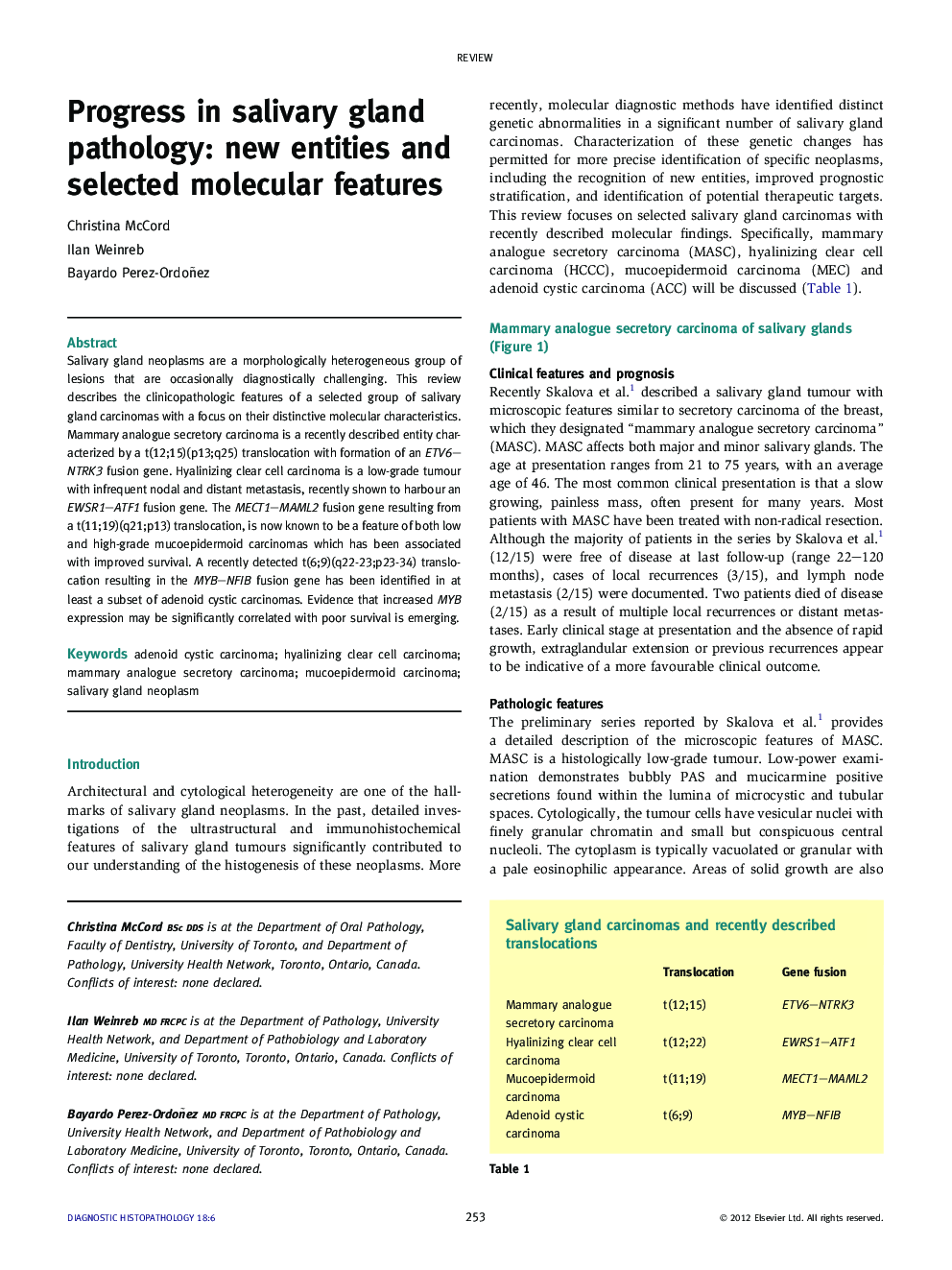| Article ID | Journal | Published Year | Pages | File Type |
|---|---|---|---|---|
| 4131251 | Diagnostic Histopathology | 2012 | 8 Pages |
Salivary gland neoplasms are a morphologically heterogeneous group of lesions that are occasionally diagnostically challenging. This review describes the clinicopathologic features of a selected group of salivary gland carcinomas with a focus on their distinctive molecular characteristics. Mammary analogue secretory carcinoma is a recently described entity characterized by a t(12;15)(p13;q25) translocation with formation of an ETV6–NTRK3 fusion gene. Hyalinizing clear cell carcinoma is a low-grade tumour with infrequent nodal and distant metastasis, recently shown to harbour an EWSR1–ATF1 fusion gene. The MECT1–MAML2 fusion gene resulting from a t(11;19)(q21;p13) translocation, is now known to be a feature of both low and high-grade mucoepidermoid carcinomas which has been associated with improved survival. A recently detected t(6;9)(q22-23;p23-34) translocation resulting in the MYB–NFIB fusion gene has been identified in at least a subset of adenoid cystic carcinomas. Evidence that increased MYB expression may be significantly correlated with poor survival is emerging.
